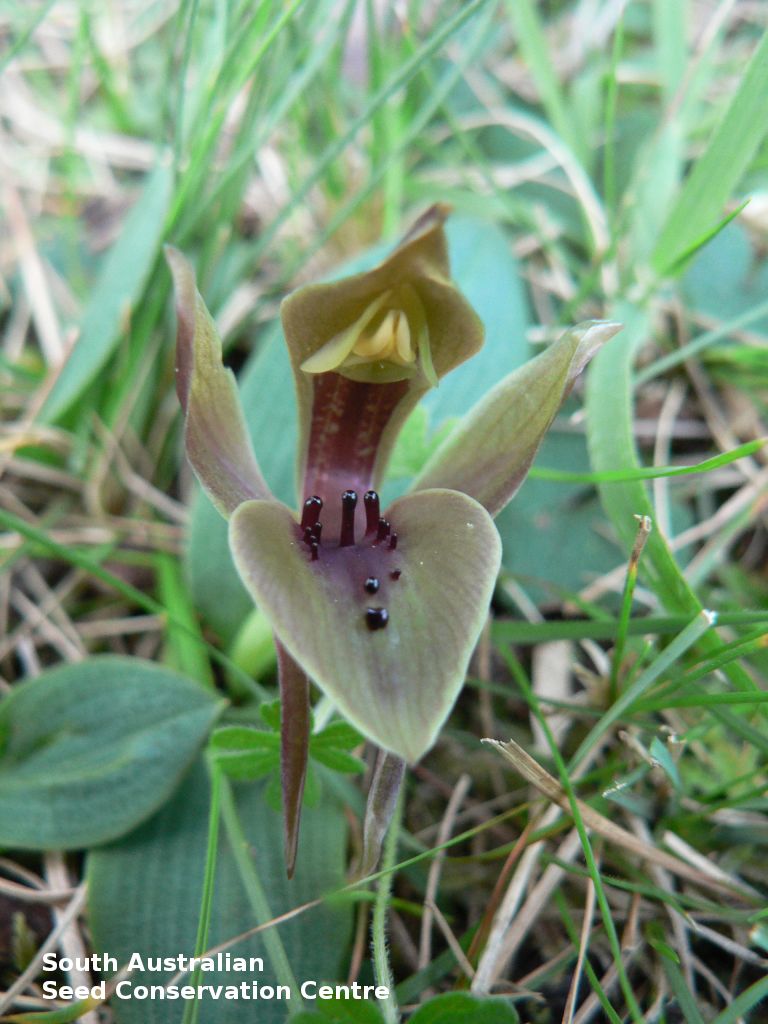




Botanical art
Prior names
Simpliglottis valida
Chiloglottis gunnii
Etymology
Chiloglottis from the Greek 'cheilos' meaning a lip and 'glotta' meaning the entrance to the windpipe, referring to the labellum or glottis resembling the mouth of the windpipe. Valida meaning strong, robust.
Distribution and status
Very few collections from South Australia with one from Cape Jarvis in the Mount Lofty Ranges and one from Caroline Forest in the lower South-east. Also found in New South Wales, Victoria and Tasmania. Native. Very rare in South Australia. Common in the other States.
Herbarium regions: Southern Lofty, South Eastern
NRM regions: Adelaide and Mount Lofty Ranges, South East
AVH map: SA distribution map (external link)
Plant description
Small orchid to 7 cm tall (stem elongating to 10 cm or more after pollination). Leaves broadly elliptic, to 50 mm long and 40 mm wide, dark green above, paler beneath, margin entire. Flower greenish-purple to purplish-brown. Dorsal sepal erect, incurved, broadly obovate-spathulate, lateral sepals stretch in basal half then recurved, divergent or parallel, broadest near the base then tapered to apex. Petals incurved or slightly divergent, asymmetrically ovate-lanceolate. Labellum on short claw, broadly ovate-cordate with reddish to blackish calli, in central, proximal two-thirds of lamina. Column widely winged in upper half, wing as long or longer than anther. Flowering between September and January. Fruits are brown papery ellipsoid capsule.
Seed collection and propagation
Collect fat capsules as they start to dry and turn brown. Pods will split and release the seeds quickly and will require monitoring. To increase the chances of collecting mature pods, it is recommended that a small breathable bag (ie. Organza bags) be used to enclose the developing capsules. Place the capsules in a container that will hold fine seeds and leave to dry for a few weeks or until the capsule split. Then carefully hold the capsule and tap it gently to release the seeds. Store the seeds with a desiccant such as dried silica beads or dry rice, in an air tight container in a cool and dry place or in liquid nitrogen.